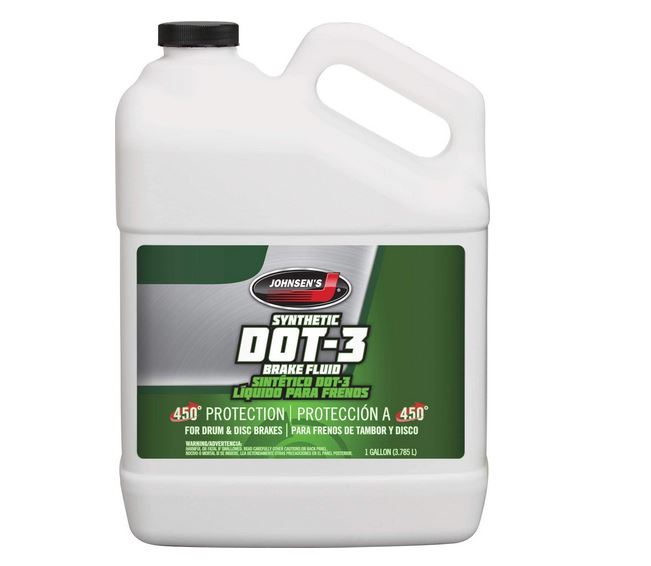Last updated on January 13th, 2023 at 08:35 pm
How to use Sea Foam in oil? Observing the benefits of Seafoam in oil will assist you in deciding where to use this liquid in your vehicle. Adding Seafoam in oil to your crankcase, gas tank, or intake manifold can help prevent contaminants and debris from accumulating in your car over time. Keeping impurities from hurting your vehicle can extend its life.
Let’s look at the benefits of adding Seafoam in your oil and how you can keep your automobile running at peak performance for a long time. You can keep your crankcase working at a high level, supply sufficient lubrication for your engine, clean your machine correctly, and cure loud lifters by understanding the benefits of this technique.
The road map of this article include:
- What is Seafoam in oil before and after?
- Seafoam in oil results
- How to use Seafoam in oil
- How long to leave Seafoam in oil?
- Effect of too much Seafoam in oil
- How to use Seafoam in diesel oil
How to Use Sea Foam in Oil
One of the most common ways to incorporate Seafoam into oil is to put it in the crankcase to remove undesirable engine oil sludge. Using Seafoam in your oil can assist remove deposits from your crankcase and oil system, allowing correct liquid movement and preventing overheating.
Sludge can build up in the crankcase of many cars, both new and old, obstructing and blocking where the oil is meant to flow over time. If the oil does not travel rapidly or adequately enough, it will build up and become contaminated with dirt and debris.
Keynote:
Seafoam in oil can assist in shifting, dissolving, and dislodging the buildups so that they can be filtered out and removed before causing any additional damage. The ideal approach to use Seafoam in engine oil for crankcase health is 1.5 ounces per quart of motor oil.
If you’ve decided to use Seafoam in your engine’s oil, you’ll need to change it right away before moving on to the next stage. Add Seafoam to the oil right before you go for an oil change so that it can soak in while you’re on your way to the nearest mechanic or auto body shop.
This allows any undesired gunk in your automobile to be broken down by the Seafoam in the oil.
Finally, when you add the Seafoam to the oil, make sure you change your oil filter. You can’t drive too far without cleaning the oil filter of built-up debris and sludge since the Seafoam will transform the old built-up sludge back into a liquid, causing your oil to become much dirtier.
Directions:
- Calculate the amount of Sea Foam to add to the oil. For each quart of oil in the crankcase, add 1 ounce.
- Remove the oil filler cap and pour the Sea Foam directly into the engine crankcase as directed. One treatment per oil change interval is recommended.
- For optimal cleansing benefits, drive 100 to 300 miles before changing your oil and filter, while Sea Foam can be used at any time in between oil changes.
What is Sea Foam in Oil Before and after?
Seafoam is a fuel additive that aids in improving the efficiency of your vehicle. The fuel and oil in your car will become tainted as you drive it frequently. Seafoam aids in the removal of deposits from your fuel and oil system, ensuring that it remains clean. It aids in the reduction of carbon emissions from your vehicle.
Seafoam comes to the rescue when your vehicle’s continual use causes sludge deposits to accumulate in the combustion chambers. Seafoam is put in the gas tank or the oil filter during the next servicing. Seafoam cleans the engine without affecting the gasoline or oil in any way.
For the past 70 years, the seafoam brand has been used to clean engines and remove gasoline and oil deposits. Fuel and oil aren’t fully clean, and they can react with pollutants like grit and other sediments to form sludge, which affects your engine’s performance.
Sea Foam in Oil Results
When you use Seafoam in your oil, what should you expect? It liquefies residues that stifle oil flow and lubrication in engines. As a result, you should expect improved engine performance and lower noise levels. You will also extend the engine’s useful life.
Some of the results and benefits of using Seafoam in oil are listed below:
- It provides your car with outstanding fuel efficiency due to its less friction.
- Due to sea foam less friction, it causes a reduction of emission, which makes your car safe.
- The use of Seafoam in oil results in the elevation of your car engine, which helps avoid friction and consequences in a healthier engine. This process provides you with a quieter engine experience.
- The quality of the whole system is a result of the better engine which Seafoam provides. The use of Seafoam in oil eliminates dirt and sludge in your car fueling system.
- Seafoam in oil helps to maintain fuel viability.
How Long to Leave Sea Foam in Oil?
Though adding Sea Foam to oil 100 to 300 miles before changing your oil is recommended, it will work just as well if you add it to your oil for as long as the oil lasts before your next oil and filter change.
So, is it harmful to leave Seafoam in your oil? Using 12 ounces of Sea Foam per quart of oil in your engine is a safe technique to clean a crankcase, free up rings, and free up sticky lifters while driving. Sea Foam will not harm internal engine components or block the oil pick-up screen because it is not a chemical engine flush.
Also, how long can sea foam be run in the crankcase?
Note: While Sea Foam can be added between oil changes, we recommend doing so 100 to 300 miles before replacing the oil and filter.
Is it possible to put Seafoam in your crankcase?
Sea Foam can be added to your motor oil as often as every oil change interval – pour into your engine’s oil filler neck! For routine crankcase cleaning, add Sea Foam to your engine’s oil (into the oil filler neck) 100 to 300 miles before your scheduled oil and filter change.
Effect of too much Seafoam in oil
Too much of a good thing, as the adage goes, may be harmful. Seafoam falls into the same category. So, what happens if you overfill your engine with it?
For one thing, there could be sludge concerns affecting the oil in your vehicle. Some people have complained that the oil tends to thin out, making it difficult to lubricate the moving parts beneath the hood (and keep the engine going).
The engine’s parts may create a lot of friction and cause a lot of difficulties if there isn’t enough oil flowing through them.
For one thing, there could be sludge concerns affecting the oil in your vehicle. Some people have complained that the oil tends to thin out, making it difficult to lubricate the moving parts beneath the hood (and keep the engine going).
The engine’s parts may create a lot of friction and cause a lot of difficulties if there isn’t enough oil flowing through them.
Note:
Spraying too much Seafoam in your vehicle’s vacuum system might potentially cause it to clog. As a result, more blockages are likely to occur. Aside from sludge, your vehicle’s engine may be clogged with dirt, debris, and other detritus.
This can cause a lot of problems for your vehicle and perhaps cause the engine to die prematurely. An overheated engine is the leading cause of death in automobiles. When Seafoam becomes an issue, one option is to drain the present oil and then replace it.
How to use Seafoam in diesel oil
Seafoam can also be utilized to improve the health and durability of your diesel oil. Seafoam in diesel oil will assist clean the fuel injectors and boost your fuel economy, preventing unwanted engine performance degradation.
Providing a better idle and avoiding rough engine idle will help you extend the life of your fuel system.
All you have to do is add the required amount of Seafoam to the diesel oil and drive usually. As you move your automobile, the Seafoam in diesel oil will help clean out any additional deposits and gradually boost your fuel economy by cleaning out the fuel injectors and fuel lines.
Conclusion
Adding Seafoam to your oil can help you keep your engine, crankcase, fuel system, and lifters in top shape for a long time! Seafoam in oil prevents impurities from accumulating over time and keeps transportation lines clean, allowing fluids to circulate efficiently and quickly. Related: The Cheapest Way to Fix Catalytic Converter, Cost & How to Fix

Hi dear, I am Dennis Gift, an autobody repair technician with over 4 years of experience; and I love everything about fitness and cars and researching and sharing my experience. And this is where I get to do that freely without reservations. So come along with me.



